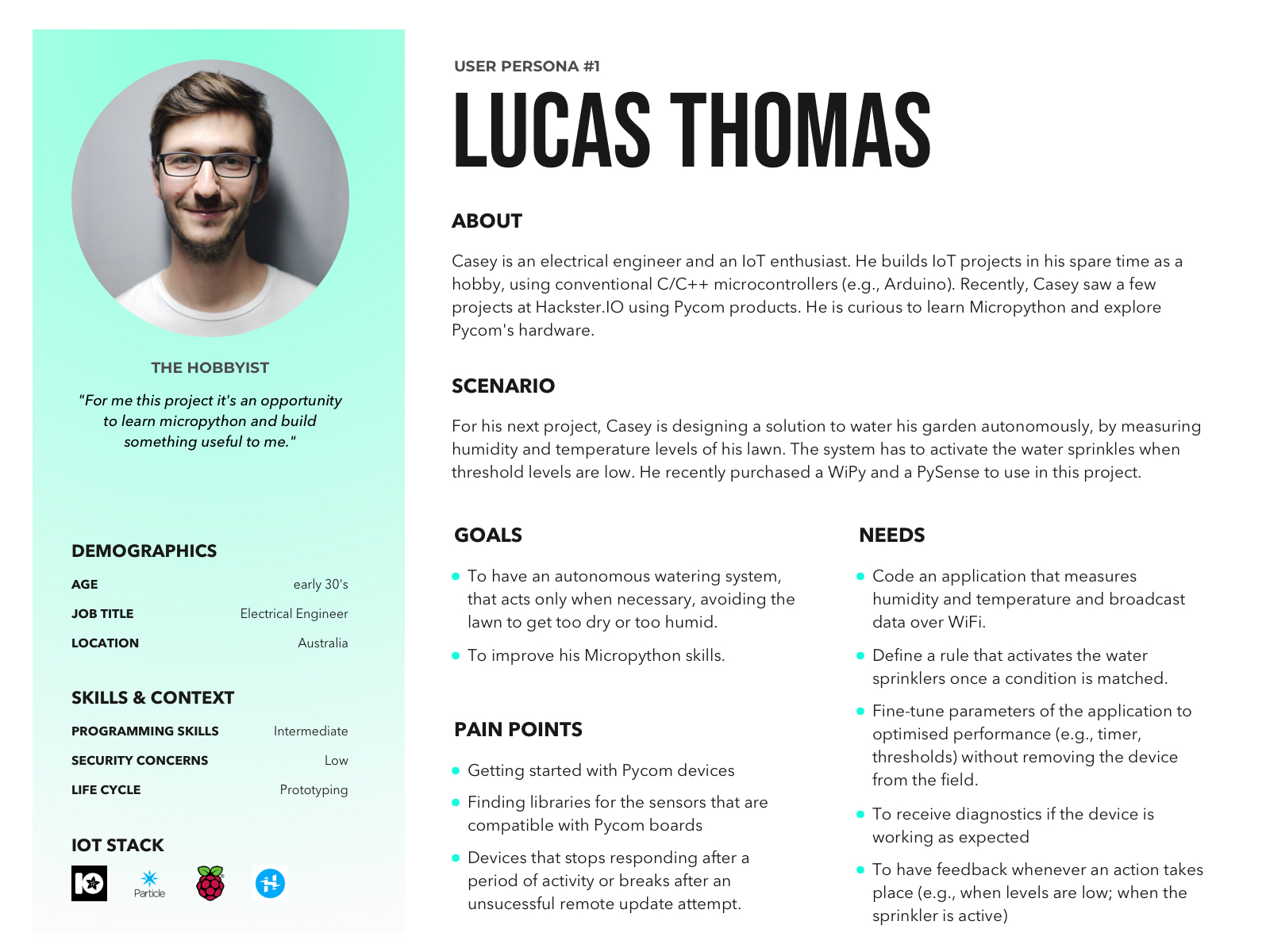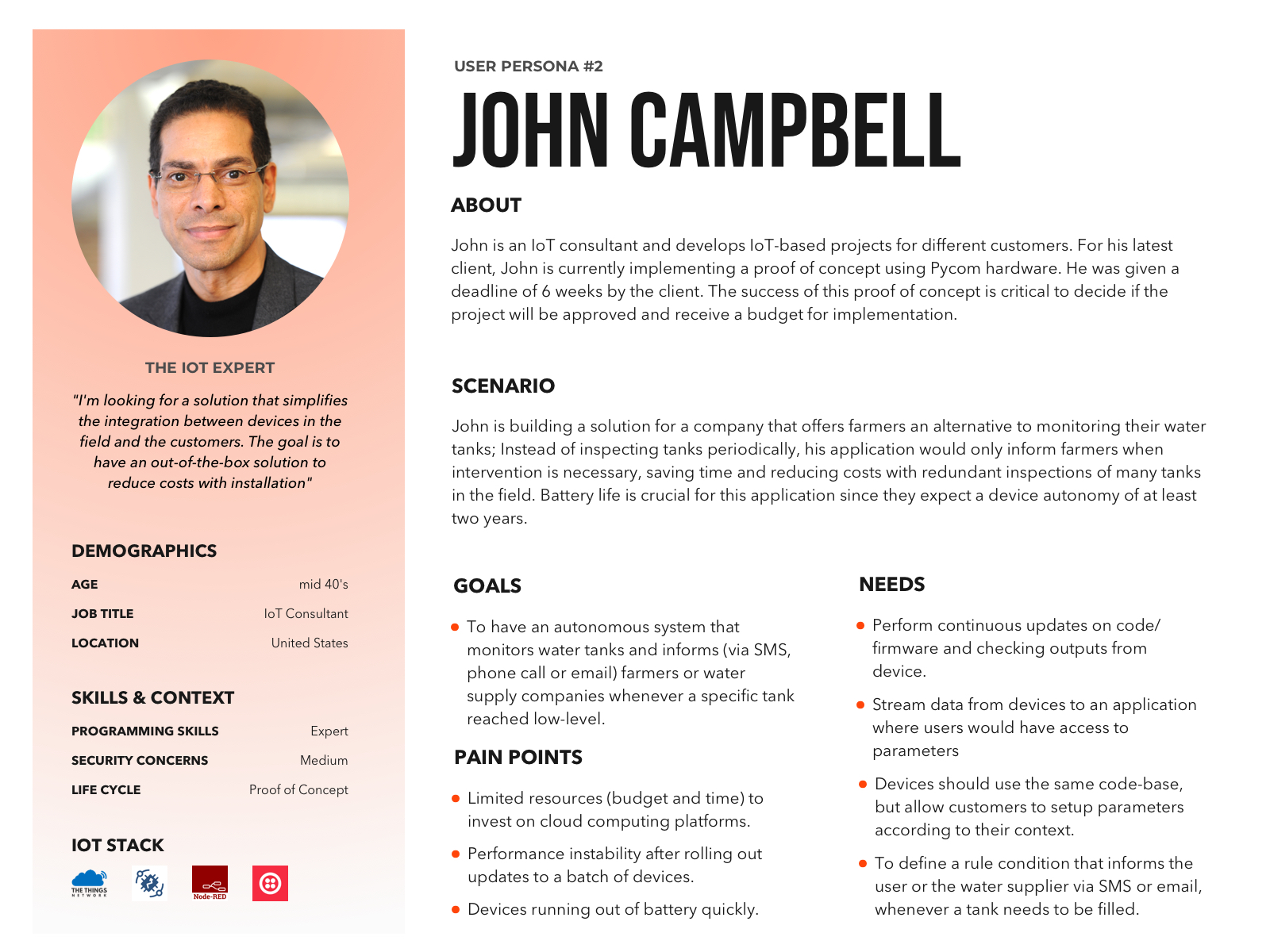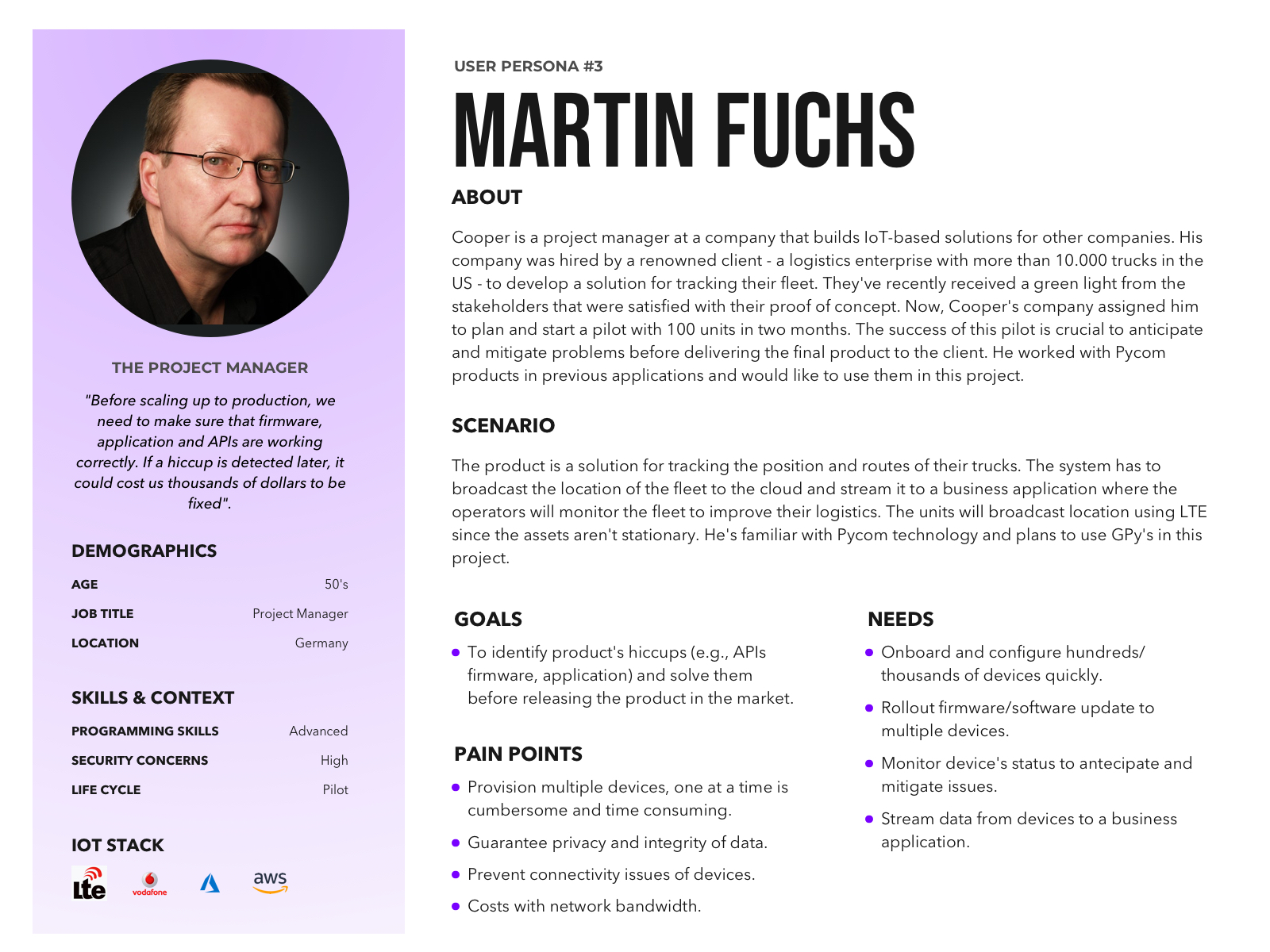Project description
My goal as a Product designer was to enable users to provision and monitor a fleet of IoT devices with a single click, while also allowing customization of the data collected for each fleet.
Research activities
- Hearistic Evaluation
- Competitors analysis
- Web-analytics analysis
- Usability Testing
- CSAT quick on-site survey
- A/B testing
Deliverables
- Customer personas
- Hi-fidelity prototype
- Customized design system
- Demo-videos
Duration
1st research question
To identify key user groups that highlight weaknesses and uncover opportunities, the following research methods were employed:



Since the majority of Pybytes users are tech enthusiasts exploring the potential applications of Pycom IoT, the research revealed that most challenges were related to the customisation of the Pybytes environment, where the urgent questions for a user are:
- How can I provision multiple devices with one click?
- What MicroPython code should I use to track ambient data?
- Can I view all relevant metrics for my Pycom sensors in one place?
Problem statement
Defining the Requirements
To maximize usability across different use cases, I proposed developing a widget-based interface where provisioned sensors are grouped into projects. To help users set up their own projects easily, we introduced case-based project templates tailored to specific industries:
- Smart Home
- Fleet Management
- Robotics
- Smart Wearables for Health
By selecting a project template, users receive:
- A preset of relevant metrics visualized via widgets on the Pybytes dashboard
- Ready-to-use MicroPython code snippets for their sensors
- Access to the corresponding community on the Pycom Forum
This approach empowers users to seamlessly configure their IoT solutions while fostering collaboration within the Pycom community.